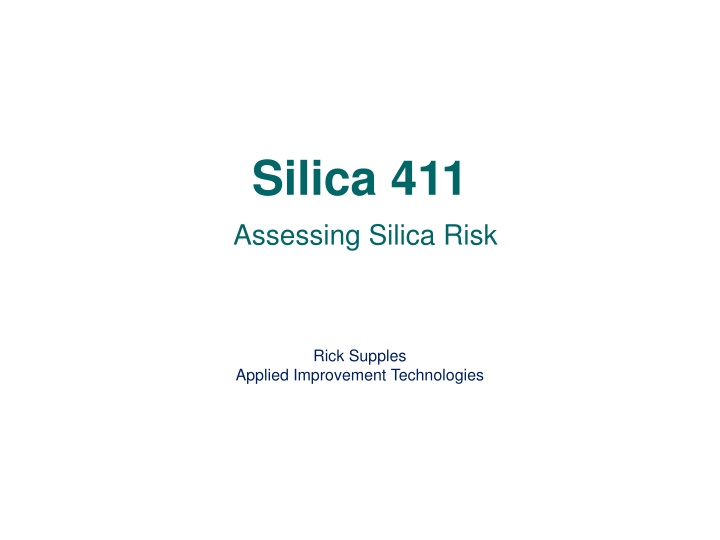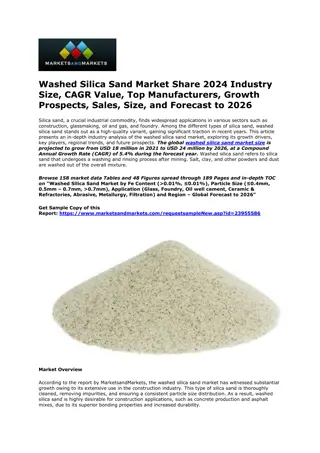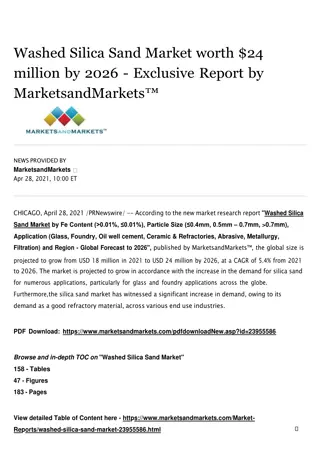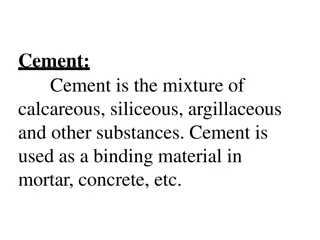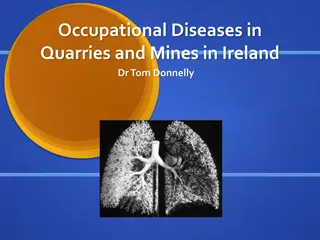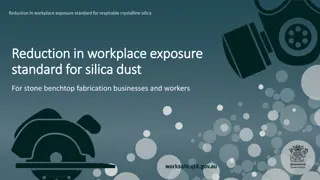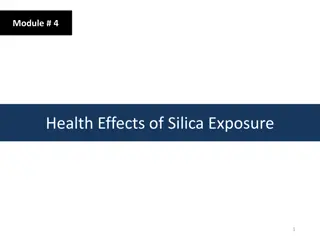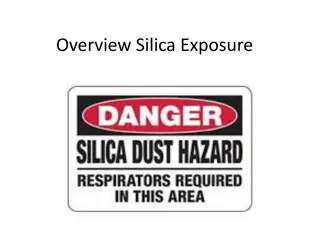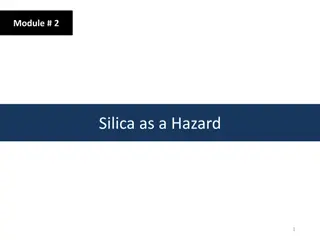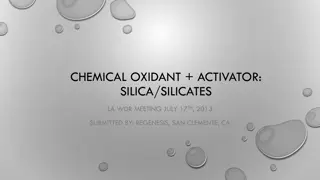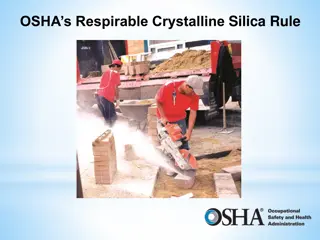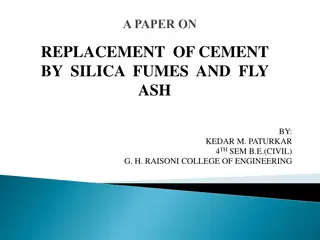Silica: Risks and Terminology
This presentation covers essential information on silica, including differences between various forms, health risks, occupational hazards, exposure limits, and control methods. Learn about silicon, silica, silicates, and silicone, as well as crystalline versus amorphous silica. Understand the nature of silica in rocks and the health implications of exposure.
Download Presentation

Please find below an Image/Link to download the presentation.
The content on the website is provided AS IS for your information and personal use only. It may not be sold, licensed, or shared on other websites without obtaining consent from the author.If you encounter any issues during the download, it is possible that the publisher has removed the file from their server.
You are allowed to download the files provided on this website for personal or commercial use, subject to the condition that they are used lawfully. All files are the property of their respective owners.
The content on the website is provided AS IS for your information and personal use only. It may not be sold, licensed, or shared on other websites without obtaining consent from the author.
E N D
Presentation Transcript
Silica 411 Assessing Silica Risk Rick Supples Applied Improvement Technologies
Learning Objectives Learning Objectives At the end of this presentation you will be able to: State the difference between silicon, silica, silicates and silicone. 1. State the difference between crystalline and amorphous forms of 2. silica. Describe Health Risk 3. Recall legacy exposure event 4. Describe at-risk occupations 5. Describe the OSHA Permissible Exposure Limit and ACGIH TLV 6. Describe exposure control methods 7. Describe silica risks for home DIY projects 8.
Silica Terminology 1. Differences: Silicon, Silica, Silicates and Silicone?
Silicon Silicon is an element (Si) Commercially obtained from sand Combines with O2 forms molecule (SiO2) = silicon dioxide = silica Forms rocks = silicates
What happens to silica in nature? silica + mineral + time = other silicates
Whats the difference between crystalline and amorphous silica? Crystalline silica is quartz, also found in pottery, ceramics, bricks, concrete and artificial stone Amorphous silica includes glass, flint, opal, silica gel
What is the risk from rocks? Quartz is most common form of crystalline silica. Quartz close cousins - cristobalite & tridymite Hard to extract anything from earth that is silica-free All three forms may become respirable size dusts if work involves chipping, cutting, drilling, or grinding objects that contain crystalline silica.
Are all dust sizes created equal? 3 dust categories Inhalable ( 100 m) Thoracic ( 10 m) Respirable ( 4 m)
Disease Types - Silicosis (Proliferative Pneumoconiosis) - Lung Cancer - Chronic obstructive pulmonary disease (COPD) - Kidney disease
Dusty Lung Diseases Proliferative Non-Proliferative Silicosis Talcosis White lung disease Stannosis Black lung disease Siderosis Shaver s disease
Why Recent Compliance Focus? Debilitating disease Exposure is common 2 million U.S. workers currently exposed (NIOSH)
1930 hydroelectric project 3 mile tunnel was cut through Gauley Mountain high granite 2,500 workers, drilling through high concentrations of silica rock No PPE Tunnel Rock Composition commercial value for steel production Tunnel diameter was expanded to offset the cost of the project.
Construction OSHA estimates 2.3 million U.S. workers potentially exposed to crystalline silica ~90% of those workers employed in the construction industry. Construction Jobs: Masonry saws, grinders, drills, jackhammers, chipping tools Operating vehicle-mounted drilling rigs; milling; operating crushing machines Operating heavy equipment for demolition
General Industry - Concrete products, foundries - Hydraulic fracturing for gas and oil - Dental laboratories - Abrasive blasting
Hierarchy of Controls ESEAP
Elimination Substitution Engineering Administrative PPE
Exposure Control - Sandblasting Substitution to non-silica abrasive critical Employers find change difficult Non-silica abrasives are more effective and less costly
Silica Substitutes Metal Surface Treatment Deburring - Paint Removal - - - - - Aluminum Oxide Glass Bead Steel Shot Baking Soda Metal Slag - - - - - Corn Cob Granules Peach Pits Nut Shells Dry Ice Plastic Media
7. New Rule Highlights Small-business employers can use specified dust control methods in lieu of sampling Must have a written exposure plan (ECP) Must define housekeeping practices Must offer medical exams Must train workers Must keep records
Silica Control - Construction Option A Option B Performance-oriented option or Scheduled monitoring option Use Table 1 Tools with ventilation or water systems built-in. Best method for construction takes guesswork out Measure workers exposure to silica, choose dust controls to limit exposures to < PEL Scheduled sampling =quantitative measurements 2 trigger levels - above the permissible exposure limit (PEL) and action level (AL). Use if/then guide detailing the sampling schedule Performance Option - it s complicated!
Table 1 Specified Exposure Control Methods When Working With Materials Containing Crystalline Silica
We sampled a demolition job in summer Work crew was dismantling portion of building Hot ambient summer temperatures
Whats the Risk for a DIYer Masonry saws, grinders, jackhammers, or handheld chipping tools
